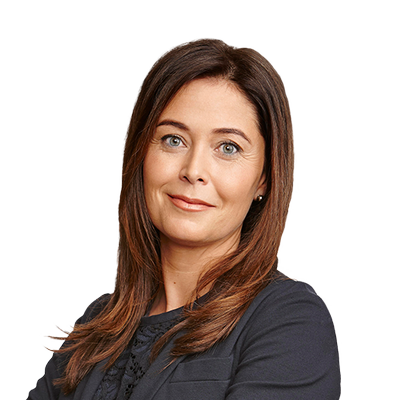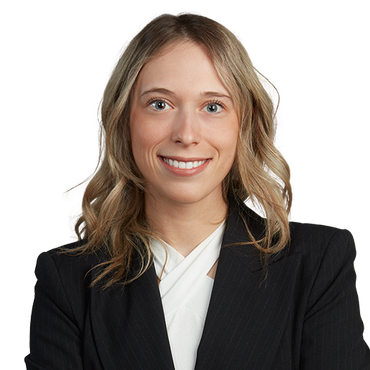Internal legal audits of intellectual property
The importance of proactive intellectual property rights management Many companies are unaware that they possess intellectual property1 rights, so they are not proactive in dealing with intellectual property as part of their regular operations. Sometimes, these companies are suddenly faced with the issue when a third party undertakes due diligence on them. This due diligence will inevitably include an intellectual property component, which may lead to a series of corrective measures to solidify, consolidate or recover their rights. In extreme cases, the company may be forced to renegotiate the terms of an agreement in principle, to see the value of the company reduced, or to abort a project or transaction due to its failure to pay proper attention to this category of asset. Third parties do not want to invest in or purchase a company or its shares at a high price if it is likely to encounter issues that could render future projects inoperative. Moreover, case law has taught us over the years that a purchaser cannot rely solely on the representations and warranties and the indemnity provisions of a purchase and sale agreement; they must conduct reasonably adequate due diligence, failing which they may be deprived of certain remedies. This bulletin is primarily aimed to help companies and their leaders properly manage intellectual property to avoid pitfalls. It also provides guidance to companies and institutions required to conduct due diligence in the context of a potential acquisition or financing. However, it does not claim to be exhaustive. Furthermore, we hope that this bulletin will help raise awareness among organizations about the importance of IP and demonstrate that large companies and those with activities heavily focused on intellectual property are not the only ones concerned with these agreements. What is an internal intellectual property legal audit? An internal intellectual property audit is a process conducted by a company to assess all of its intellectual property rights and the protection and defence mechanisms in place. The goal is to identify its rights and gaps, thereby obtaining an overview of the status and scope of its intellectual property rights, tracking their evolution, and determining the necessary actions to identify, prioritize, maintain, protect, defend, expand and enhance these rights. It also allows for an informed assessment of their legal status and prospects. This enables the company to ensure it holds all the intellectual property rights necessary to operate its business and is protected against potential lawsuits for non-compliance with the intellectual property rights of others or any intellectual property-related commitments. Such an audit also helps guide management more effectively in various situations, including commercial and legal, in accordance with the company’s strategy. Frequency of internal audits Proactivity The frequency of an internal intellectual property audit depends, among other factors, on the size and nature of the company, the characteristics, complexity and dynamism of the industry, the strategic importance of the intellectual property assets within the company and the evolution of its assets and ongoing or future projects. Ideally, a company will ensure that this audit is carried out periodically, annually or biannually, by gathering individuals knowledgeable about the intellectual property developed within the company with those capable of making decisions on intellectual property matters. For a company with a strong technological footprint or rapid innovation, a semi-annual or even quarterly frequency may be necessary. A company with a limited intellectual property portfolio may opt for slightly longer intervals, while remaining vigilant to exceptional events. Exceptional events Of course, a company’s proactivity does not shield it from urgent or exceptional situations that may arise during its life and require immediate attention without waiting for the periodic review. There are times in a company’s life when an audit becomes necessary. These situations may occur in various contexts, including: Prior to a liquidity event or change of control of the company, such as a merger, acquisition, arrangement, reorganization, initial public offering (IPO) or asset sale, or during strategic operations such as a joint venture or equity or debt financing During the launch of a new product or a market expansion: This step must be preceded by an intellectual property audit, which sometimes includes an assessment of the freedom to operate (FTO) when the launch or expansion involves an innovation During a major structural change, including the reorganization of the company or a new strategic orientation When a significant change occurs in the market, such as the arrival of a competitor or the imminent launch of a product similar to the company’s, an audit can detect vulnerabilities and prepare the response During significant legislative changes affecting intellectual property During litigation, mediation or negotiations involving intellectual property rights in order to assess the strength of the intellectual property assets, as well as the strengths and weaknesses of the case, to facilitate quick decisions in line with the company’s strategic objectives. Additionally, the intellectual property portfolio can serve deterrent or defensive purposes. For instance, in the event of a patent infringement lawsuit filed by a competitor, it is advisable to check whether that competitor is infringing on any of the company’s intellectual property rights During the negotiation of an intellectual property license, to ensure that the licensor owns the relevant intellectual property rights and that the terms of the license align with the company’s commercial objectives and contractual obligations Addressing intellectual property issues and continuously reflecting on intellectual property through periodic audits, a company that conducts an audit during an exceptional event will be able to respond more easily and quickly to the arising issues What are the advantages of this kind of audit? An internal intellectual property audit allows a company to: Be aware of the status of its intellectual property (IP) rights, their scope, strengths and weaknesses Collect information on the competitive market situation Identify promising IP or IP that the company is relying on to achieve its objectives Determine the projects that need to be undertaken in order to protect IP and highlight priorities Proactively manage intellectual property rights by determining the necessary monitoring Address incomplete documentation, incomplete chains of titles, ambiguous property rights, incomplete coverage of rights, and licenses to be signed Avoid poor management of open-source software Manage uncertainties relating to prior art (any information, publication or document disclosed before the filing date of a patent application relevant for assessing the patentability of the invention, including its novelty and inventiveness) Manage gaps in territorial protection of rights More easily define the direction to take in various situations, including litigation, transactions, contract negotiations, and make decisions in accordance with the company’s strategy Review compliance with laws, such as intellectual property rights marking issues, uses to avoid, and those to encourage Develop the profile of it as a serious and prudent company attentive to intellectual property assets, adding credibility and reassuring co-contractors, buyers and investors Reduce the transaction timeline in the event of an exceptional event What are the main aspects to address during an internal audit? Inventorying the intellectual property Compile an inventory of all intellectual property rights and add any new developments (innovations, new brands) Prioritize intellectual property assets if there are several, in order to allocate resources accordingly for their protection and adhere to established budgets Identify confidential data Identify potential obstacles Identify underutilized or redundant assets Include in this inventory the intellectual property held by third parties for which the company has exploitation rights, including source codes and open-source software Organizing it in a file Organize all essential documents such as title deeds, certificates, chain of title documents, agreements, licenses, assignments, and expiration and renewal dates of rights. Confirming the ownership of each asset Confirm that official documents designate the correct holder of intellectual property rights that there are no breaks in the chain of title, and that registrations with the intellectual property offices are accurate and correctly attributed to the current holder of the rights. Completing gaps in ownership of rights Identify all relevant parties, as applicable (employees, inventors, designers, contractors, suppliers, partners, third parties) who must sign assignments of rights, confidentiality agreements, waivers of moral rights and licenses. Assessing the validity and strength of intellectual property For patents, trademarks and industrial designs, review the scope of the claims and prior art to determine the legal strength of each patent, industrial design or trademark. Legal risks in intellectual property Analyze whether the company uses intellectual property and technologies that risk infringing third-party intellectual property Assess the risks of damages and establish a strategy for intellectual property infringement by third parties Analyze the scope, validity, and enforceability of any blocking or potentially blocking intellectual property (which hinders the company’s development or commercialization of a technology, invention, or product, creating a market entry barrier) Monitor relevant published IP applications from third parties Regularly update research and analysis of freedom to operate (a study conducted to ensure that a product or process can be legally developed, manufactured and marketed without infringing existing intellectual property rights held by third parties) Collect all documents related to past or ongoing litigation involving the company’s intellectual property (including court decisions, settlements, negotiations in intellectual property matters, cease and desist letters or notifications to third parties or concerning third-party intellectual property rights, and legal opinions) Assessing the alignment and relevance of intellectual property Determine whether intellectual property rights align with the company’s commercial objectives and the technological advancements being exploited or promising. Reviewing intellectual property contracts Establish an inventory of contracts with an intellectual property (IP) component Such as R&D contracts, collaborative research contracts, material transfer agreements, employment contracts, joint venture contracts, inbound IP licenses (licenses the company has obtained from third parties) and outbound IP licenses (licenses granted by the company to third parties for its own IP), open-source software licenses and third-party components2, franchise agreements, IP-related cost and revenue-sharing agreements, agreements on the allocation of IP rights (past and new), IP co-ownership and joint exploitation agreements, IP trust agreements, escrow agreements for source code, cryptographic keys or technical documents, open innovation agreements, non-competition and non-solicitation clauses/agreements related to trade secrets, contracts for services (software development, design, audiovisual), trademark coexistence agreements and consent agreements, co-branding agreements, sponsorship and merchandising agreements (IP aspects), image rights authorizations and other personality elements, publishing contracts, agreements with collective copyright management organizations, commercial agency and representation contracts (use of trademarks, materials), user-generated content agreements (involving interactive user participation contributing to content, such as social media, video or photo-sharing sites, forums, blogs, etc.), confidentiality agreements, non-competition agreements, and agreements relating to employee inventions and invention disclosures. Verify, among other things: Whether royalty payments have been made Whether there is a need to renegotiate the terms of certain contracts Whether all the conditions are respected Whether all relevant parties have signed the contracts Identify any binding clauses Including clauses related to the following aspects: Use limitations Royalties Co-ownership, non-transferability or limited transferability of contracts Non-exclusivity of granted rights Exclusivity of granted rights Options on intellectual property rights Movable hypothec security interests on intellectual property assets Securitization or monetization of intellectual property Also, verify the conditions attached to the contracts such as the territory, scope and duration, and any restrictions that may hinder a transaction Security and intellectual property Establish or review security protocols for trade secrets and restricted access to company documents and premises. Intellectual property policies Establish or review internal policies and procedures for identifying, protecting and managing trade secrets Establish or review internal policies and procedures to enable/facilitate the development of innovations Establish or review internal policies and procedures for addressing the use of artificial intelligence within the company by employees, subcontractors and contractors Establish or review internal procedures to activate legal verification protocols (to ensure that protocols for conducting legal due diligence are in place) Consolidating developments stemming from R&D Maintain laboratory notebooks (document all the stages of innovation) Dedicate a team to investigate and analyze developments and assess their potential and intellectual property content, and determine the next steps Providing training Provide appropriate training for all the relevant individuals of the company for a better understanding of confidentiality undertakings and the use of AI and to emphasize the importance of documenting every stage of innovation. Monitoring competitors’ rights Monitor relevant published Iintellectual property applications and conduct regular updates of research and analyses of freedom to operate for innovations Review competitors’ new trademark filings Review new competitors’ websites Ensuring alignment between key territories and protection territories Make sure that the company’s intellectual property has protection with the government offices in the territories where it conducts commercial or manufacturing activities, or where intermediaries that are part of its supply chain are located. Also, it should aim for protection in territories where the company intends to expand its activities before entering those markets. Establishing the scope of protection in these territories This must be undertaken before negotiating with suppliers, future licensees, manufacturers, etc. in a new market and when launching new products, services and innovations. Compliance Establish or review the measures in place, responsible individuals in charge, and the action plan for verifying the compliance of the company’s actions Establish a reporting and detection system for internally developed innovations Verify the company’s compliance with licenses (obligations to disclose sources; codes, copyright notices, compliance with moral rights, etc.). Any use of third-party intellectual property must be documented to ensure the company has the necessary right to exploit these elements in its products Conclusion Organizing, structuring, and managing intellectual property assets is highly advantageous. The question is not whether intellectual property (IP)-related issues will arise in the company’s operations, but when they will occur! A recent audit will help reduce the number of problematic events, and when such an event occurs the response will be faster, with minimal consequences, and may even unveil opportunities. If financing or the sale of the company is planned, conducting an audit is mandatory. In these cases, the audit can be complex, particularly if there are international portfolios or highly technical assets. Being prepared is beneficial, providing ready answers to investors' questions, strengthening the company's image, and optimizing IP valuation. An internal audit offers the company with a comprehensive global perspective on its intellectual property assets, allowing for optimized use while identifying and addressing any potential gaps. This practice mitigates risks and allows precise management of key information to establish intellectual property assets and facilitate commercial transactions involving intellectual property. Intellectual property (IP) includes patents, patent applications, trademarks (registered, pending or used without registration), copyrights, industrial designs, trade secrets, know-how, plant variety protection, domain names and other digital data (databases, software, applications, etc.). Including, in particular: any library, module, software framework, plug-in, SDK (code libraries, debuggers, compilers), script, driver, embedded software (firmware), container image (immutable file), package, and source/object code, and any of their dependencies, that are provided, owned or licensed by a third party, and used, integrated, interfaced, incorporated, distributed, or required for compilation, testing, deployment or execution of tasks, APIs.




